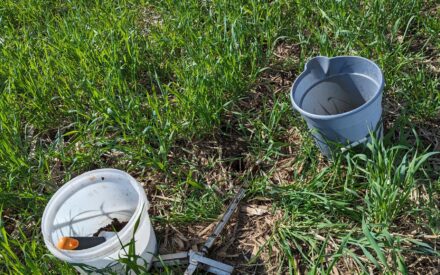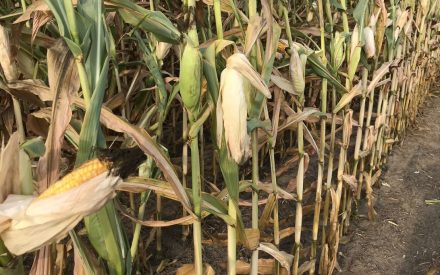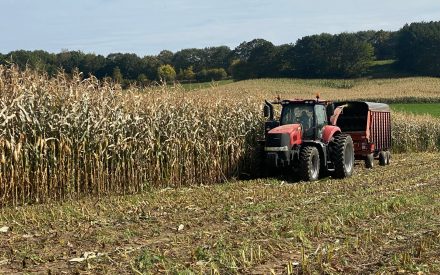This article originally appeared in the Wisconsin Agriculturalist
With or without a yield monitor, the person driving the combine or forage harvester for many years can probably point out on a map where the best and worst yields consistently come from. What is happening to those areas of fields that consistently produce exceptional yields?
Many factors affect crop yield; only one of them is fertilizer. The six factors listed here have a strong relationship with consistently better-yielding areas of a farm field:

1. Optimal soil fertility
Soil tests typically are used to fertilize the soil for nitrogen, phosphorus and potassium. The management goal is to apply the right source of fertilizer or manure at the right rate, at the right time, in the right place so the crop has access to those nutrients as it progresses through key growth stages. For example, applying manure or fertilizer to very low or low soil test fields provides a 60% to 90% probability of yield increase.
2. Deep topsoil
Crops grown in deeper topsoil have a greater volume of soil where roots can explore for water and nutrients. When the soil depth allows crop roots to extend down 3 to 6 feet (alfalfa roots can reach depths up to 30 feet) without hitting soil compaction, hardpans, bedrock, high water tables or other root restrictions, better yields can be obtained.
3. High organic matter
Most farmland has soil organic matter that ranges from 1.5% to 6%. Organic matter is an easy metric for a farmer to track because it is always provided on current lab soil reports. Not all soil types have the same potential for organic matter. For example, organic matter of 1.8% is good for sand but would be very low for clay soil.
Organic matter has a natural attraction to water and nutrients. It can absorb and hold as much as 90% of its weight in water, storing that water for the crop between rainfall or irrigation events or providing resilience during extreme weather (both flood and drought). Organic matter releases nearly all its stored water for the crop. In contrast, heavy clays can also hold high quantities of water, but much of it is held too tightly and the crop cannot access it.
4. Good drainage
Soil drainage is essential to crop production and management. Higher-yielding areas are usually never too wet or too dry. Either the field is blessed with a naturally well-drained soil type or a combination of cultural practices and tile are used. Tile drainage removes excess water, keeping the water table below the root zone when the soil is saturated.
5. Lack of slope
Another common feature of better-yielding areas is lack of slope. The length, steepness and direction of slope greatly influences crop management and production. Farmland with slope greater than 2% is usually subject to erosion. The steeper the land, the more erosion can occur, and more management is required for successful cropping. For example, on an easily erodible soil with no conservation practices, a slope from zero to 1% has a relative productivity of 95%. But as the slope increases to 5% to 8%, productivity drops 30%.
6. Ideal soil pH
Finally, optimal soil pH that both crops and soil organisms can access and cycle nutrients more efficiently. The optimal pH for most crops and soil is 6.5 to 7.0. Not only does this pH range make nutrients like phosphorus more available, but coupled with ideal temperature and moisture conditions, soil life including microorganisms and fungi can ramp up decomposition, nutrient recycling and nitrogen-fixing bacteria that increases N mineralization.
Many of the above characteristics are dependent on the soil on your farm. This emphasizes the importance of keeping topsoil in your fields by stopping wind and water erosion, and “feeding your soil” with soil health practices. The five principles of soil health are:
- Maximize soil cover.
- Maximize presence of living roots.
- Maximize crop diversity.
- Minimize disturbance.
- Integrate livestock.
These five practices promote and support an ideal and healthy soil for your upcoming crop. Soil’s importance to crop growth and yield can be summed up this way: “It’s better to plant $2 seed in a $25 hole than $25 seed in a $2 hole.”

 ▶ AI in Agriculture
▶ AI in Agriculture ▶ Evaluating MRTN Rates for Corn Grain and Silage After Manure Application
▶ Evaluating MRTN Rates for Corn Grain and Silage After Manure Application ▶ Practices to Optimize the Nutritive Value of Corn Silage
▶ Practices to Optimize the Nutritive Value of Corn Silage ▶ Explore the New Corn Silage Dry Down Monitoring Tool
▶ Explore the New Corn Silage Dry Down Monitoring Tool


